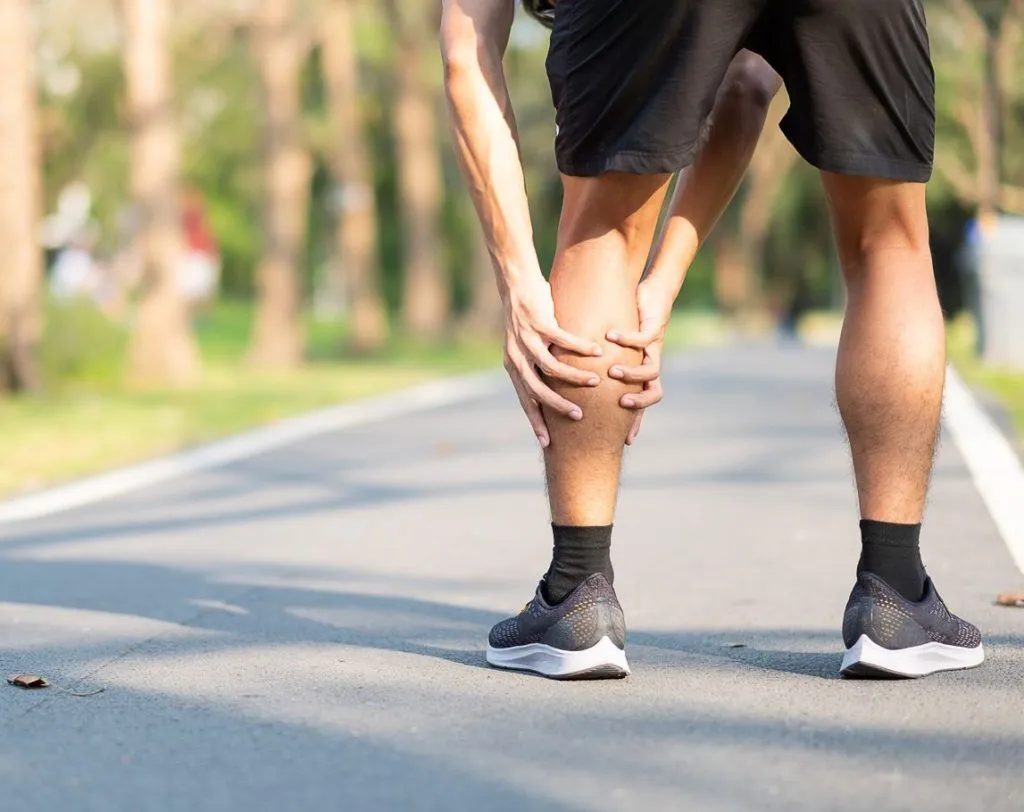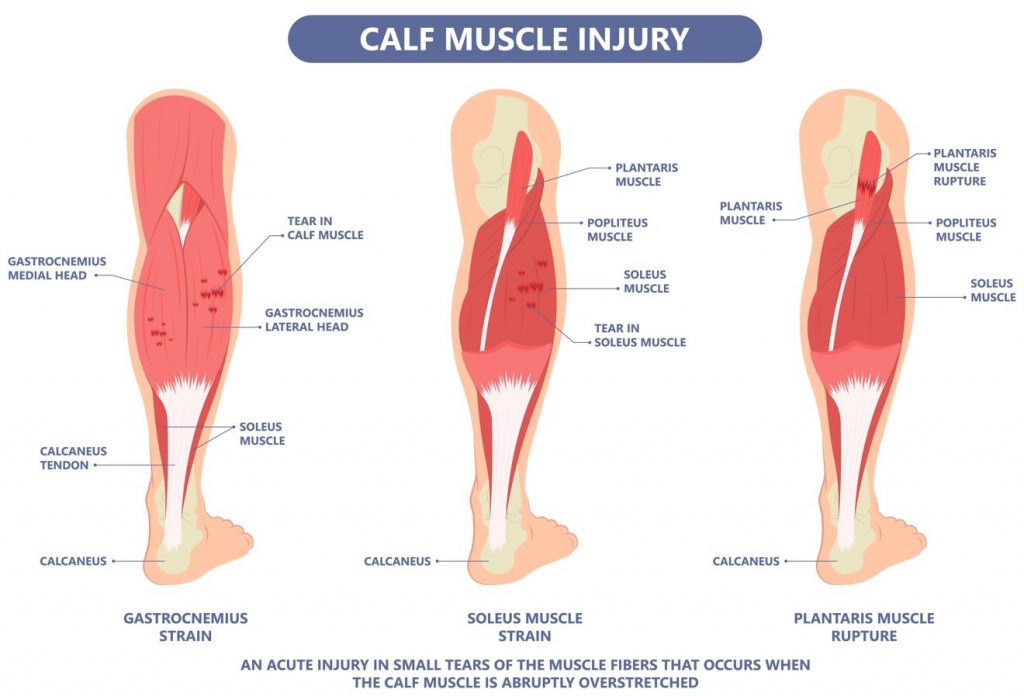Causes of Calf Strain
The calf muscle group are made up of 3 different muscles, namely gastrocnemius, soleus, and plantaris. The calf’s primary function is to plantarflex the ankle, or “push the ankle down”, and this is important in generating power for propulsion.
A calf strain occurs when the muscle is contracted and stretches beyond its limits, causing muscle fibres to tear. The most commonly affected muscle is the gastrocnemius.
Calf strain can be classified into 3 gradings:
- Grade 1 – Mild, usually only cause pain during activity
- Grade 2 – Moderate, significant pain and swelling even when walking
- Grade 3 – Severe, significantly torn muscle or full rupture
Need Help? See Our Podiatrist Today
Risk Factors of Calf Strain
Risk factors of calf strain include:
- Old age
- History of a calf injury
- History of Achilles tendon injury
- Tight calf muscles
- Sudden increase in training intensity
- Inadequate recovery
- High-impact sports enthusiasts or athletes

Signs and Symptoms of Calf Strain
Signs and symptoms of calf strain include:
- Posterior leg pain, unable to run or jump
- Pain may affect walking if moderate-to-severe
- Palpable tender spot in the calf
- Swelling
- Difficulty moving the ankle up and down
- Bruising or ecchymosis may be present
Calf Strain Treatment in Singapore
Managing calf strain involves addressing the injured muscle fibres and rehabilitation. It is important to undergo proper rehabilitation to minimise the risk of recurrence.
Treatment options for calf strain in Singapore include:
- Rest
- Ice
- Progressive strengthening and rehabilitation
- Physical therapy
- Extracorporeal shockwave therapy for promoting the natural recovery of the injured muscle fibres
- Radial pressure wave therapy to improve muscle flexibility




